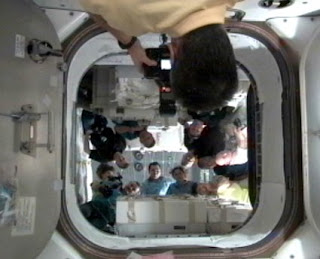 |
| Photo credit: NASA |
The Space Shuttle Discovery Landed safely at 11.57 EST (16.57 GMT) on Wednesday 9th March 2011 on runway 15 at the Kennedy Space Center, marking the end of a historic journey after twelve days in space. The weather was good and the NASA Administrator Charles Bolden was waiting to meet the crew of the very last mission of Shuttle Discovery.
Shuttle Discovery entry speed
The orbital velocity of Discovery was Mach 25, which is over 8,500 miles a second. The crew had to turn the wings in a series of rolling and banking manoeuvres to dissipate as much of the speed as possible.
This enabled the spacecraft to enter the Earth’s atmosphere at an angle of 40 degrees that would not place excessive demands on the thermal heat shield. The temperature on the outside of Discovery was as high as 3,000 degrees, which is higher than the melting point of steel but well within the design limits.
The flight control surfaces became active once Space Shuttle Discovery reached a speed of less than Mach 3.5 which is about 2,500 miles an hour.
Breaking the sound barrier
Sonic booms announced the arrival of Space Shuttle Discovery at the Kennedy Space Center and as the spacecraft made the approach it was travelling at over 600 miles an hour and the rate of descent was over 280 feet per second.
A perfect landing
The landing speed when Space Shuttle Discovery touched down on the runway was measured by the onboard computers as 224 miles per hour. NASA confirmed the offficial mission time as 12 days, 19 hours, 3 minutes and 53 seconds.
Future plans for Space Shuttle Discovery
The Shuttle Discovery will undergo a series of tests before being ending its long service as a museum exhibit.




